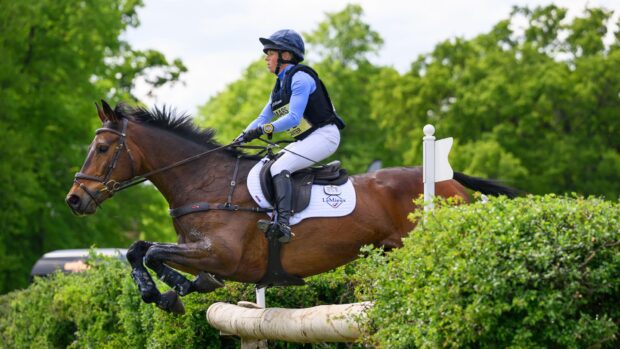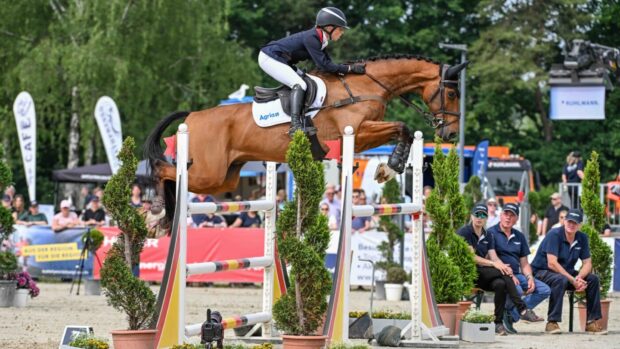What does it take to make the transition from eventing competition to showjumping? Legendary trainer Bina Ford shares her tips
Heather Larson has recently switched from eventing to showjumping and she and her mother’s 8-year-old gelding, Anytime II, have since notched up a string of successes at 1.20m and 1.30m level.
“I owe it all to my trainer Bina Ford, who has converted both of us into showjumpers,” 20-year-old Heather told H&H when asked about her 1.20m grand prix win at The Hand November Dazzler (report,14 November issue).
“She is the reason he is as amazing as he is.”
It is not unusual for eventers to turn to showjumping during the winter months, so what tips can Bina pass on to those thinking of making the move?
1. Your horse has to have the desire to leave the poles up. You can’t teach that particularly.
2. Rideability is essential: your horse must be obedient. In time the ability to lengthen and shorten and to jump fences on angles will come.
3. You’ve got to want to win.
4. Work on popping fences at an angle so that your horse will be comfortable doing so against the clock.
5. Don’t push your horse out of its natural rhythm.
6. Establish the canter and they will learn manners to a fence. This stops them rushing and establishes a forward stride. Canter is what we do in the arena and I’m anti trotting to a fence because of the diagonal action. [The horse will leave the ground with one leg late.]
We asked Bina, who is based in the Mendips, not far from the Royal Bath & West showground and well-established in the eventing and racing worlds, to tell us a bit more about her philosophies.
What’s your USP?
Every horse is different and, as a trainer, you need an individual approach to each horse you train.
What’s your pet hate?
Riders not taking responsibility and blaming their horses for any errors.
Share with us your signature exercise
I do like to work first, whatever the horse, with poles on the ground to a fence but at a canter not a trot. This way I can work with the horse rather than the rider — I can find out what that horse does. I can see if that horse leaves a leg or won’t jump an oxer. With poles on the ground you get a pattern. By what I then build I can make his performance more predictable.
What’s the best bit of advice you’ve ever been given?
Anything said to me by Caroline Bradley or David Pincus when I’ve had a lesson with them.
Any other advice you’d like to pass on?
I don’t believe in too much jumping at home. It is usually the rider rather than the horse that needs the jumping at home. But do go out prepared by at least 1 hole higher [in the jump wings] than you are going to need when you go in the ring.
I won’t sit on other people’s horses if they are going well. It’s a partnership — don’t push buttons if the thing isn’t broken. I only get on if things are going wrong.



